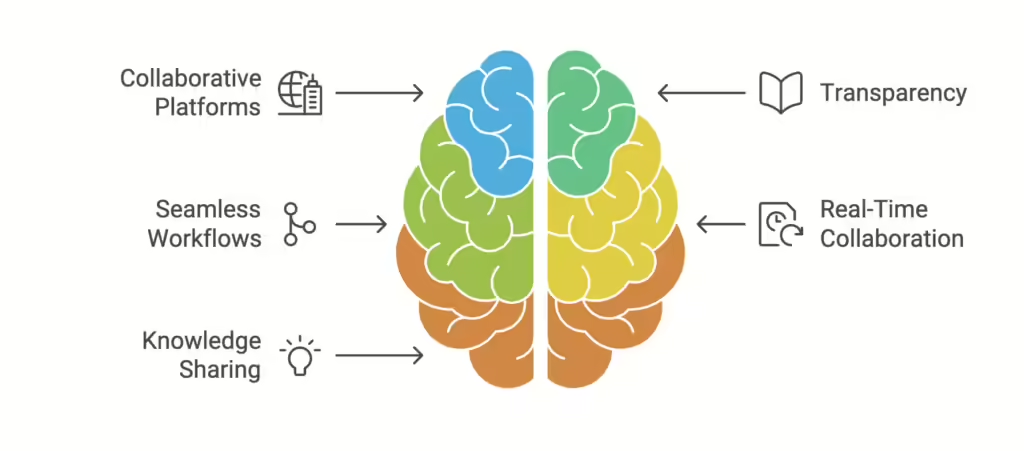Digital dexterity—the ability of an organization and its workforce to adapt and thrive in a rapidly evolving technological landscape—is no longer a luxury; it’s a necessity. As industries pivot to digital-first approaches, companies equipped with agile, tech-savvy employees are leading the charge in innovation, customer experience, and operational efficiency.
However, digital dexterity is more than adopting the latest technologies—it’s about fostering a mindset and environment where employees feel empowered to learn, experiment, and collaborate effectively. It ensures organizations can swiftly pivot during disruptions, integrate emerging tools, and maintain a competitive edge.
The software development industry exemplifies the need for digital dexterity. With changing frameworks, methodologies, and tools, staying adaptable is the key to delivering impactful solutions. This article explores four strategies to build this critical capability across your organization, enabling your teams to excel in a complex digital ecosystem.
1. Foster a Culture of Continuous Learning and Experimentation
Building a Growth Mindset Among Employees
Encouraging a growth mindset is pivotal in developing digital dexterity. Employees should see learning as an ongoing journey rather than a finite task. This shift in mindset promotes resilience in the face of constant change and motivates teams to stay ahead of technological trends. Leadership can champion this by rewarding curiosity, supporting upskilling programs, and sharing their own learning experiences.
Encouraging Hands-On Experimentation with Emerging Technologies
A culture of experimentation ensures employees feel empowered to explore without fear of failure. For example, creating “innovation labs” or “sandbox environments” allows teams to test technologies like AI, automation, or advanced analytics in low-risk settings. Such initiatives help uncover practical applications while demystifying new tools, fostering confidence, and sparking creativity.
2. Empower Employees with User-Friendly Tools and Processes
Selecting Technology Aligned with Employee Needs
Digital tools must cater to the daily realities of employees. When choosing technology, prioritize simplicity, accessibility, and compatibility with existing systems. Conduct surveys to identify pain points and use cases, ensuring the tools provide clear value. Intuitive platforms reduce the learning curve, enabling teams to focus on strategic tasks rather than troubleshooting.
Integrating Automation to Reduce Routine Tasks
Automation plays a crucial role in enhancing productivity. By eliminating repetitive manual processes—such as data entry or basic report generation—employees can redirect their energy toward strategic projects. Below is a table highlighting key areas where automation supports digital dexterity:
Task | Automation Solution | Impact |
|---|---|---|
Data Entry | Robotic Process Automation (RPA) | Reduces errors and saves time |
Customer Support | AI-Powered Chatbots | Provides 24/7 assistance |
Report Generation | Automated Dashboards | Ensures real-time insights |
Workflow Approvals | Process Automation Tools | Streamlines decision-making |
3. Establish Cross-Functional Collaboration and Knowledge Sharing
Breaking Down Silos Through Collaborative Platforms
Silos stifle innovation and hinder the spread of digital knowledge. Deploying collaborative platforms such as Slack, Microsoft Teams, or Confluence promotes transparency and enables teams to work seamlessly across departments. Real-time collaboration tools facilitate the sharing of insights, project updates, and best practices, making knowledge easily accessible.

Encouraging Mentorship and Peer Learning
Mentorship and peer learning programs build collective digital intelligence. Pairing tech-savvy employees with those less familiar with tools accelerates digital adoption while fostering camaraderie. Similarly, hosting “knowledge-sharing days” where employees present tech-use cases encourages creative problem-solving and strengthens a learning-oriented culture.
4. Measure and Refine Digital Dexterity Initiatives Continuously
Setting Clear KPIs for Digital Dexterity
To build a truly adaptive workforce, organizations need clear metrics to track their progress. Examples of KPIs include employee adoption rates of new tools, engagement in digital training programs, and efficiency improvements in workflows. These indicators ensure that digital dexterity initiatives align with business objectives.
Using Feedback Loops to Adapt Strategies
Employee feedback is a goldmine for refining initiatives. By creating regular feedback loops—through surveys, focus groups, or suggestion portals—organizations can identify what’s working and where improvements are needed. This iterative approach ensures digital tools, training, and processes remain relevant and impactful.
Transforming Digital Dexterity into a Competitive Advantage
Digital dexterity is not just a skill—it’s a strategic advantage that underpins innovation and resilience. By fostering a culture of learning, equipping employees with the right tools, enabling collaboration, and continuously refining initiatives, organizations can transform their workforce into agile innovators. In the software development industry, where adaptability is critical, digital dexterity ensures teams remain at the forefront of technology and deliver sustainable value in an ever-evolving landscape.
